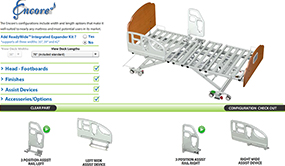|
Q: How is the ISCH-DISH different from a donut cushion? A: In many ways. First, a donut is a closed ring that makes a tourniquet effect around the ischials. The ISCH-DISH is an open backed, U-shaped pocket that promotes circulation rather than impeding it. Second, the donut cushion concentrates the weight of the body on the area of the ring. The ISCH-DISH distributes the weight of the body fully across the length and width of both femurs, thereby decreasing pressure on any one unit area compared to the donut. And third, the donut cushion is a one-size-fits-all product, while the opening of the ISCH-DISH is sized to the individual user. Q: How is the EZ-Dish different from a donut cushion? A: In many ways. First, a donut is a closed ring that makes a tourniquet effect around the ischials. The EZ-Dish is an open backed, U-shaped pocket that promotes circulation rather than impeding it. Second, the donut cushion concentrates the weight of the body on the area of the ring. The EZ-Dish support the weight of the body fully across the length and width of both femurs, thereby decreasing pressure on any one unit area compared to the donut. Third, the EZ-Dish has a layer of visco-elastic foam across the top of the support layer to ease the transition between the ischial opening and the femur support. Q: How does the Geo-Matt cut reduce heat and moisture? A: Air is able to circulate through the channels that the exclusive "Ring-of-Air" creates throughout the mattress. This wicks heat and moisture away from the body and vents it to the atmosphere better than solid foam or straight-cut foam can. Topic: Alternating pressure vs. low-air-loss Q: What is the difference between alternating pressure and low-air-loss? A: Although they're both EO277 powered mattresses, alternating pressure and low-air-loss operate on two totally different principles. Alternating pressure mattresses consist of individual air tubes that inflate and deflate on a set schedule, and in an A-B-A-B pattern. That is, at a given moment the A tubes are inflated and the B tubes are deflated, and then they reverse. This automatically changes the pressures on a given point on the body, enhancing tissue perfusion by "milking" blood through capillaries as pressure is applied and released. Low-air-loss mattresses consist of large bladders punctured by tiny pin-holes. Air diffuses up through these holes, and into the space between the air bladders or cylinders and the cover. Heat and moisture vapor from the patient diffuse down through the cover into this space, and is pushed away from the patient and out of the mattress/cover system. If this is done effectively, low-air-loss can reduce the negative effects of heat and moisture buildup on the skin. Both technologies are used in the management of skin and wounds. Neither has
consistently documented benefits over the other. Q: Does the Heel Slope contribute to foot-drop? A: No more than any other mattress does. No mattress has ever prevented foot drop.
The causes of foot drop are more closely linked to the individual's physical condition,
rather than to a lack of support of the foot in supine. However, the Heel Slope
does support the foot more effectively by better accommodating the shape of the
heel and lower leg and still dramatically reduces interface pressures. A: No. Edema is caused by the part (e.g. the hand or foot) being lower than the heart. With the Heel Slope, the heel is even with the heart. Therefore, the Heel Slope cannot contribute to edema. |
Accessible Navigation
Section Navigation
Search Our Website
Main Navigation
- Products
- Surfaces
- Beds
- Lifts & Slings
- Seating
- Positioners
- Skin Care
- Fall Protection
- Furniture
- About Us
- Clinical/Education
- Videos
- Contact
Footer Navigation
70 Commerce Center
Greenville, SC 29615
800-888-6752
864-288-8692 fax
www.spanbackup.com
©2024 Span America. All rights reserved.
View Accesskeys
Accesskeys
This site contains a number of keyboard shortcuts, called "accesskeys," to assist in navigating. Each Internet browser has a different method of accessing these keys:
- Internet Explorer on a PC use ALT+Accesskey
- Firefox on PC use ALT+SHIFT+Accesskey
- Firefox and Safari on Apple or Linux use CTRL+Accesskey
Please note: Internet Explorer users may also need to hit the “enter” key to activate a link. Apple users with Spaces enabled may need to use the accesskey for Skip to the main navigation (A); then, TAB through the navigation and press "enter" to activate a link.
Page navigation
- 0 : Back to Home
- 1 : Products
- 2 : About Us
- 3 : Clinical/Education
- 4 : Videos
- 5 : Contact
Page jumping
- ? : View Accesskeys
- A : Skip to the main navigation
- C : Skip to the content
- S : Skip to the side bar


